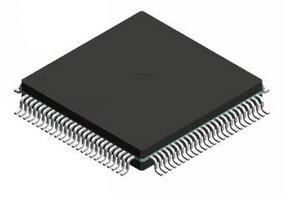
AMD Xilinx
XCS20-4VQG100C
XCS20-4VQG100C ECAD Model
XCS20-4VQG100C Attributes
| Type | Description | Select |
|---|---|---|
| Pbfree Code | Yes | |
| Rohs Code | Yes | |
| Part Life Cycle Code | Obsolete | |
| Supply Voltage-Nom | 5 V | |
| Number of Equivalent Gates | 7000 | |
| Number of CLBs | 400 | |
| Combinatorial Delay of a CLB-Max | 1.2 ns | |
| Programmable Logic Type | FIELD PROGRAMMABLE GATE ARRAY | |
| Temperature Grade | OTHER | |
| Package Shape | SQUARE | |
| Technology | CMOS | |
| Organization | 400 CLBS, 7000 GATES | |
| Additional Feature | MAXIMUM USABLE GATES 20000 | |
| Clock Frequency-Max | 166 MHz | |
| Supply Voltage-Max | 5.25 V | |
| Supply Voltage-Min | 4.75 V | |
| JESD-30 Code | S-PQFP-G100 | |
| Qualification Status | Not Qualified | |
| JESD-609 Code | e3 | |
| Moisture Sensitivity Level | 3 | |
| Operating Temperature-Max | 85 °C | |
| Peak Reflow Temperature (Cel) | 260 | |
| Time@Peak Reflow Temperature-Max (s) | 30 | |
| Number of Terminals | 100 | |
| Package Body Material | PLASTIC/EPOXY | |
| Package Code | TFQFP | |
| Package Shape | SQUARE | |
| Package Style | FLATPACK, THIN PROFILE, FINE PITCH | |
| Surface Mount | YES | |
| Terminal Finish | Matte Tin (Sn) | |
| Terminal Form | GULL WING | |
| Terminal Pitch | 500 µm | |
| Terminal Position | QUAD | |
| Width | 14 mm | |
| Length | 14 mm | |
| Seated Height-Max | 1.2 mm | |
| Ihs Manufacturer | XILINX INC | |
| Part Package Code | QFP | |
| Package Description | TFQFP, | |
| Pin Count | 100 | |
| Reach Compliance Code | compliant | |
| HTS Code | 8542.39.00.01 |
XCS20-4VQG100C Datasheet Download
XCS20-4VQG100C Overview
The XCS20-4VQG100C chip model is a high-performance device tailored for digital signal processing, embedded processing, image processing, and other applications. It is designed to meet the needs of modern computing and processing tasks, and is expected to be in high demand in the future.
The XCS20-4VQG100C chip model is designed to provide the best performance in its class. It features a low-power, high-speed architecture with a wide range of features and options. The device is capable of running complex algorithms and applications at high speeds, and is built for reliable operation in demanding environments. The chip model is also designed to be easy to program and use, allowing for quick and easy development of applications.
The XCS20-4VQG100C chip model is programmed using the HDL language. This language provides a powerful and versatile way to program the device, allowing for the creation of complex algorithms and applications. The language is designed to be easy to learn and use, and provides a wide range of features and options.
The XCS20-4VQG100C chip model is widely used in a variety of applications. It is used in digital signal processing, embedded processing, image processing, and other applications. The device is also used in a variety of industries, including automotive, aerospace, medical, and consumer electronics.
When designing applications for the XCS20-4VQG100C chip model, there are a few important considerations to keep in mind. It is important to consider the device's power consumption, as well as the speed and accuracy of the algorithms and applications that will be running on the device. It is also important to consider the programming language and the development environment, as well as any potential compatibility issues with other devices or components.
To demonstrate the capabilities of the XCS20-4VQG100C chip model, there are several case studies available. These case studies show the performance and reliability of the device, as well as how it can be used in various applications. These case studies can serve as a valuable resource for developers and designers, as they can provide insights into the capabilities of the device and how it can be used in different scenarios.
In conclusion, the XCS20-4VQG100C chip model is a powerful and versatile device designed for high-performance digital signal processing, embedded processing, image processing, and other applications. It is expected to be in high demand in the future, and is designed to provide the best performance in its class. The device is programmed using the HDL language, and is widely used in a variety of industries. When designing applications for the device, it is important to consider the power consumption, speed, accuracy, programming language, and development environment. There are also several case studies available that demonstrate the capabilities of the device.
You May Also Be Interested In
4,523 In Stock
Pricing (USD)
| QTY | Unit Price | Ext Price |
|---|---|---|
| No reference price found. | ||

